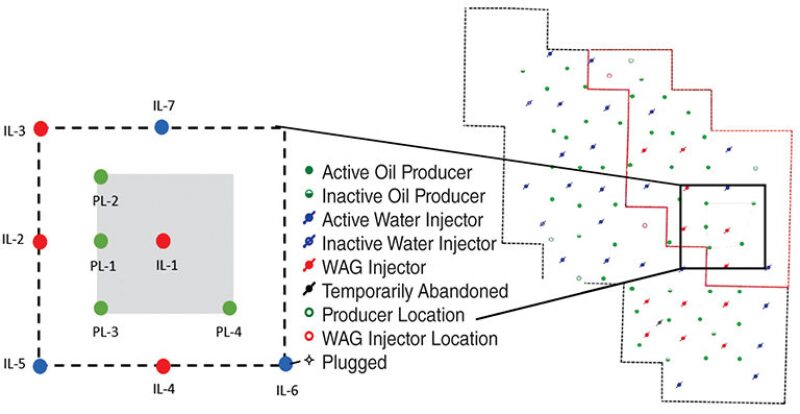A carbon-dioxide (CO2) -foam enhanced-oil-recovery (EOR) pilot research program has been initiated to advance the technology of CO2 foam for mobility control in a heterogeneous carbonate reservoir. Previous field tests with CO2 foam report varying results because of injectivity problems and the difficulty of attributing fluid displacement specifically to CO2 foam. A more-integrated multiscale methodology was required for project design to further understand the connection between laboratory- and field-scale displacement mechanisms.
East Seminole Field
The East Seminole Field in the Permian Basin of West Texas was discovered in the early 1940s with an estimated 38 million barrels of original oil in place (OOIP). The field was developed throughout the 1960s, producing 12% OOIP through pressure depletion. Waterfloods began in the early 1970s and continued into the 1980s with strategic infill drilling, reducing the well spacing from 40 to 20 acres.
Tertiary CO2 floods began in inverted 40-acre, five-spot patterns in 2013 in the eastern portion of the field.


